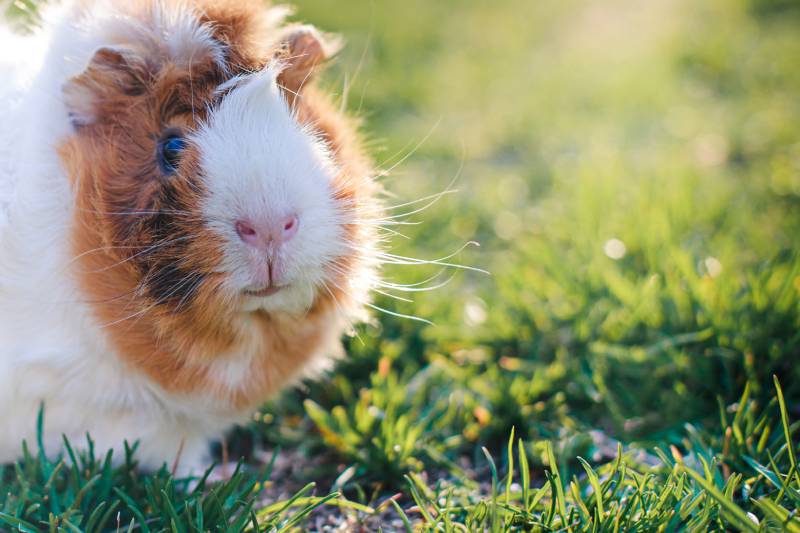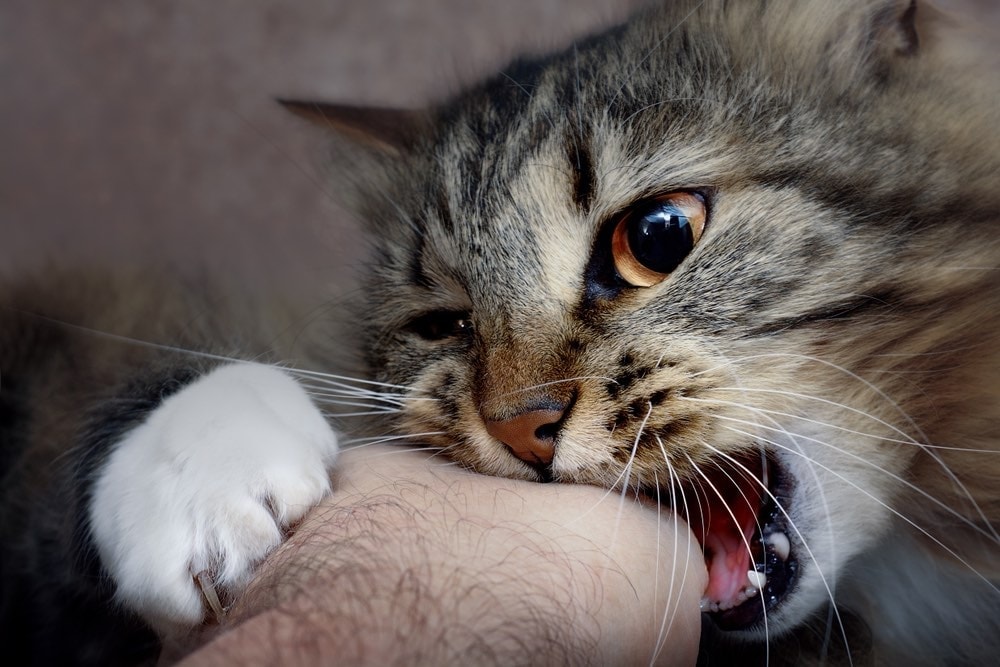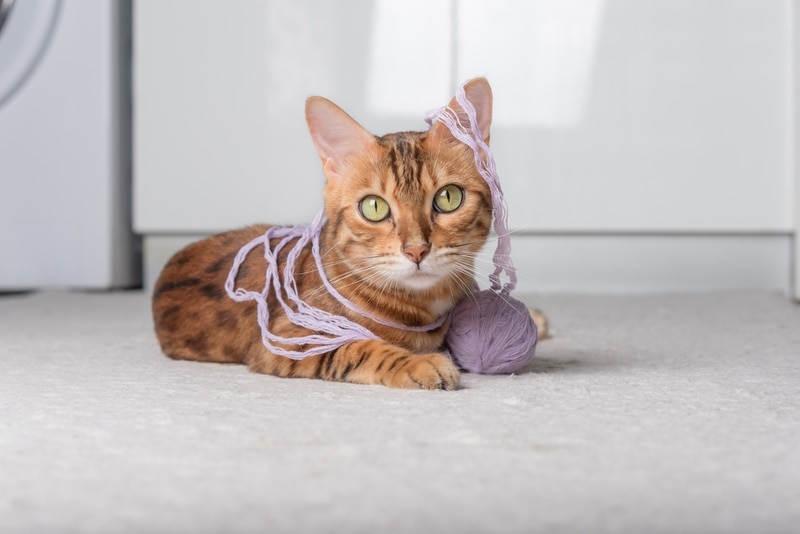How to Tell If a Cat is in Labor: 6 Vet-Recommended Signs to Look For

Updated on
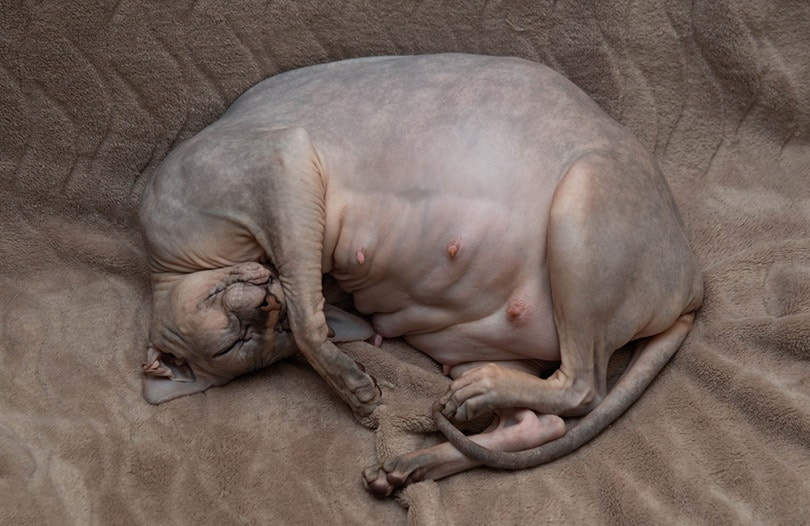
If you have a female cat that’s expecting a new litter of kittens, we bet you’re excited! The typical length of a cat’s pregnancy is between 52–74 days from the time of breeding or about nine weeks. But knowing when your cat is about to go into labor isn’t always easy.
To help you be the best “midwife” you can be for your expecting cat, here’s a list of signs that are good indicators your cat is going into labor.
The 6 Signs How to Tell If a Cat is in Labor
1. Her Mammary Glands Will Get Bigger
A pregnant cat’s mammary glands will increase in size during the final week of pregnancy. Cats usually have eight mammary glands arranged in two parallel lines on the underbelly extending from the groin area up to the underside of the chest.
Keep an eye on these glands to see when they appear swollen, as it’s a sure sign your expectant mother is starting to produce the milk her kitties will need to thrive.
2. She Will Start Making a Birthing Nest
Expectant cats start creating a nesting area to use for giving birth. This typically happens a few days before labor begins. You can give your cat a helping hand when she starts roaming around the house looking for a place to give birth. She may meow a lot and seem stressed.
Get a birthing box, (sometimes known as a nesting box) set up in a quiet and warm area of your home away from any drafts. A nesting box doesn’t have to be anything fancy. A cardboard box with sides high enough to prevent the kittens from falling out will suffice. Line the bottom of the box with plastic before adding shredded newspapers. Then place a blanket inside for your cat to arrange. Young kittens need to stay warm as they cannot regulate their body temperature.
If you have other pets at home, put the box in a location those animals can’t access, so your soon-to-be mother cat has the peace she needs. If you have children at home, tell them to stay away from the nesting box. It’s a good idea to encourage your cat to sleep in the box as soon as you see she’s arranging the bedding.
If your cat doesn’t have a place ready for her to give birth in, you can expect her to use the most unexpected place, like inside an open sock drawer or on a shelf holding towels.
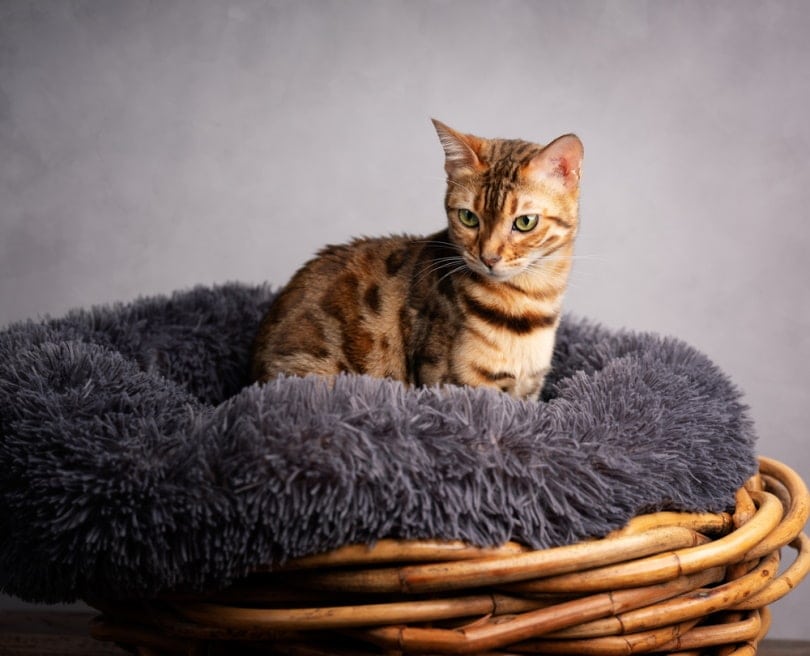
3. Her Body Temperature Will Drop
A cat’s normal body temperature is 100°F–102°F. A day or two before having kittens, a cat’s temperature will drop to around 99°F. If you think it’s hard to take your cat’s temperature, it’s not that difficult to do if you have the right thermometer. Pick up a pet thermometer with an extra flexible tip that gives you an accurate readout on an LCD screen in seconds. It’s best to hold your cat on your lap when she’s calm and follow the instructions that come with the thermometer.
You should know that you don’t have to take your cat’s temperature if you don’t want to. Just keep your eye out for the other signs of labor we’ve covered here, and things will be fine!
4. She’ll Stop Eating
An expectant cat will usually stop eating during the last 24 hours before labor. This decrease in appetite often happens at the same time her body temperature drops. Don’t make an issue of your cat’s lack of appetite; this is perfectly normal behavior. Once those kitties are born, her appetite will return and be greater than ever!
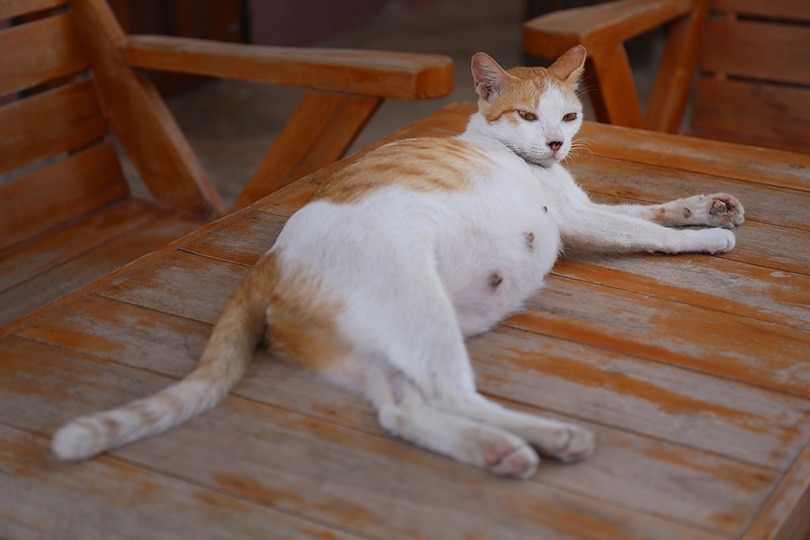
5. She’ll Act Differently
A cat close to going into labor will generally show changes in her behavior. Your pregnant cat may start pacing around the house or following your every step. She may also be very clingy and want you to hold her often. It’s not unusual for a soon-to-be mother cat to become more affectionate with her favorite person. This can be seen as a sign she wants that favorite person of hers to be with her during the birthing process.
A sure sign that your cat is about to start labor is when she heads to the nesting box and starts licking her genitalia because the vulva starts discharging a few hours before birth starts. Your cat’s water will break, which is often the main indicator of labor.
During this final stage when the water is breaking, your cat will most likely do a lot of licking, panting, howling, and pacing. But don’t worry! She’ll know when it’s time to settle down into the nesting box to give birth!
6. The Contractions Start
Your cat will begin having contractions a few hours before delivery that you probably won’t see because they’re subtle. But right before giving birth, you will see the main uterine contractions start when your cat starts pushing to help the first kitten through the pelvis. You may notice your cat straining at times, but once the kitten’s head is out, one or two more pushes should complete the birth of that kitten.
Helping During Delivery
Cat labor usually goes very smoothly. However, you should oversee the process of your cat giving birth, so you can step in to help if necessary. Limit the number of spectators so your cat doesn’t get upset.When the first kitten is born, check if the mother has broken the thin membrane around the kitten called the amniotic sac. She should do this right after birth by licking the kitty on the face so the baby can breathe. If she doesn’t do it, you can gently rub the newborn kitten’s face with your clean finger and open the sac.
Your new mother cat will bite through the umbilical cord when she’s done giving birth. To play it safe, long before she gives birth, consult with your vet about how to safely and properly cut the umbilical cord in case your cat doesn’t do it. But don’t worry about that as most mother cats handle this task just fine on their own!
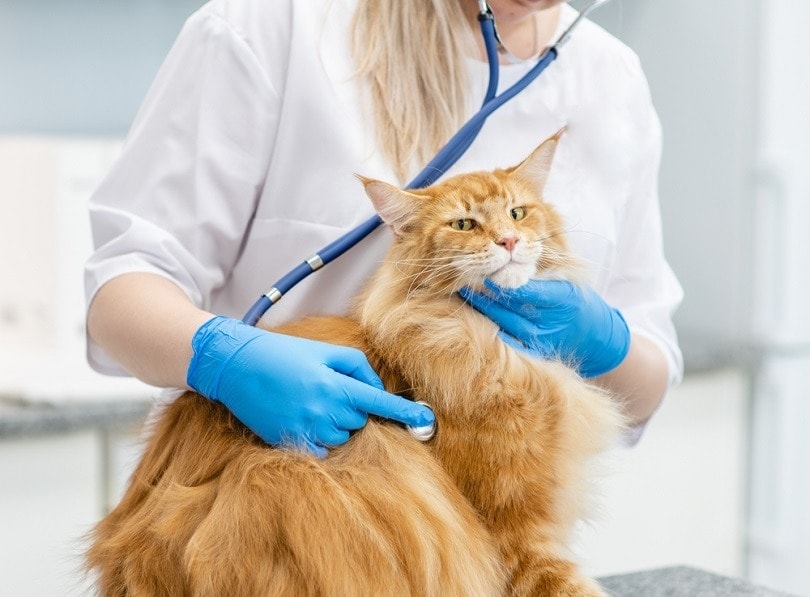
How to Tell When a Cat is Done Giving Birth
Your cat will be finished giving birth when she starts settling down and is less preoccupied with licking herself and giving birth. She will be more relaxed and focused on nursing and cleaning up her babies by licking them.
Aftercare Tips
The entire birthing process should be over in a few short hours. In rare cases, it can take up to 24 hours so keep a watchful eye over the entire birthing process. If you notice your cat having trouble, like straining to give birth for longer than an hour, contact your vet right away.
You can expect your cat to have between four and six kittens, although she can have fewer or even more! Just don’t be too eager to intervene. Your cat may want you to be present for emotional support but keep your distance and only intervene if you must.
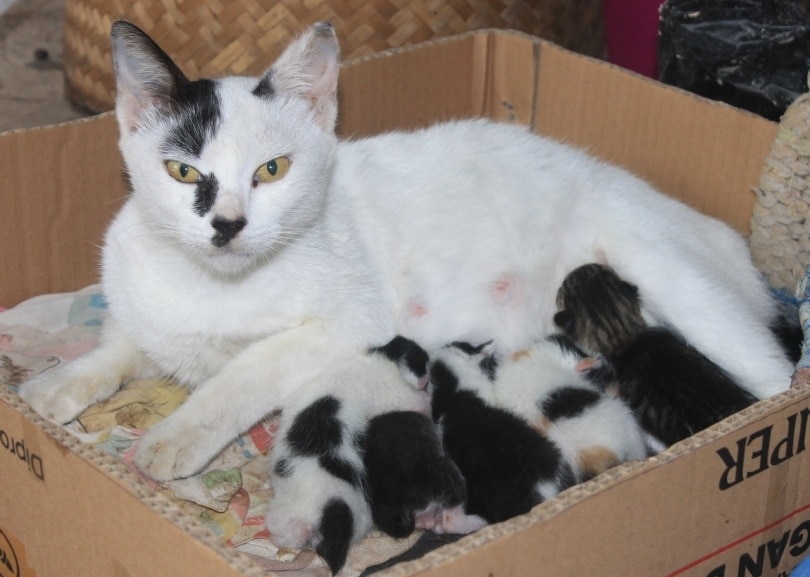
Potential Complications to Monitor For
While most cats deliver kittens without complications, there is always a risk for dystocia or difficult birth.
- The cat becomes weak, depressed, or febrile (rectal temperature consistently greater than 102.5 F).
- Overt blood loss from the vulva lasting more than ten minutes.
- More than 30 minutes of intense labor and straining with no progress or passage of the fetus.

Conclusion
It’s always exciting when you’re waiting for the arrival of a litter of newborn kittens! Now that you know how to tell when a cat is in labor, you’ll know what to look for and be ready for the exciting day!
Related Reads:
Featured Image Credit: Azovsky, Shutterstock

